Last updated on July 21st, 2022 at 09:19 pm
What was it like to travel on the Oregon trail? This is a question that many people have asked over the years. The Oregon Trail was an important route for many people in the 1800s.
It allowed them to travel from Missouri to Oregon. This post will take a closer look at what life was like on the Oregon Trail. We will also discuss some dangers travelers face along the way!
What was the Oregon Trail?
It’s hard to imagine what it was like to travel on the Oregon Trail. Thousands of people used this path in the 1800s to make their way westward. Without the passing of the Oregon Donation Land Act in 1850, it’s doubtful that people would have settled in the West as quickly.
Despite the fortunate circumstances of the Oregon Trail’s existence, the journey wasn’t an easy one.
The Oregon Trail was a network of paths and routes stretched from Missouri to Oregon. Settlers looking to start new lives in the western United States used it.
The trail was over two thousand miles long and typically took around six months to complete.
During this time, settlers faced many dangers. These included everything from river crossings and diseases to starvation and dehydration.
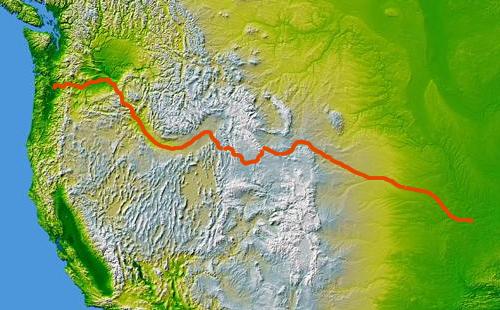
Despite the risks, the Oregon Trail was essential to American history. It allowed for the settlement of the western United States and played a significant role in the country’s development. Let’s explore the daily routines of those who traveled on the trail and examine some of the challenges they faced.
What was it Like to Travel on the Oregon Trail?
As we mentioned before, the Oregon Trail was a long and arduous journey. It would typically take around six months to complete, and settlers would face many dangers along the way.
In addition, the trail was difficult to travel on, especially when the missionaries first used the route, but someone had to do it.
The desire to explore and expand West was fueled by Manifest Destiny. This was the belief that it was America’s destiny to expand from coast to coast. The idea of Manifest Destiny played a significant role in the settlement of the West.
The Oregon Trail represented an opportunity for many people to start new lives. It was a chance to escape the constraints of society and strike out on their own.
For some, the journey was a way to escape debt or persecution. People from all walks of life used the trail. This included everything from families to single men and women. However, most of those who traveled on the Oregon Trail were farmers looking for new land to farm.
Missionaries Pave the Way
Missionaries first used the Oregon Trail in the 1820s. They were looking to convert the Native Americans to Christianity. Unfortunately, the journey was difficult, and many missionaries did not make it to their destination.
Despite the challenges, the missionaries paved the way for future settlers. In 1834, Nathan Wyeth, a merchant, led a missionary group through the wilderness and established one of the first outposts in Idaho.
Not long after Wyeth’s expedition, a Protestant missionary named Marcus Whitman and his group of ministers were determined to spread Christianity to Native Americans.
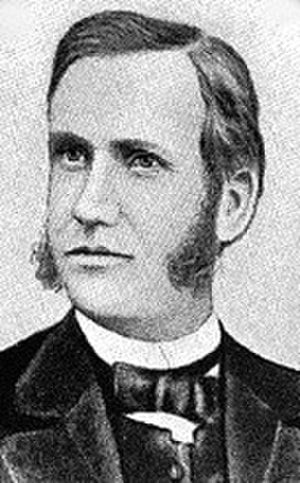
So, in 1835, Marcus and his group of missionaries vowed to venture longer and further than anyone else so that travelers could safely use the Oregon Trail.
Whitman made one of two trips on the Oregon Trail, his first getting him as far as the Green River Rendezvous, a meeting place for fur trappers and traders in the Rocky Mountains near Wyoming.
After returning home, he took another trip to continue his missionary goals. Whitman married a woman named Narcissa and set out on his second trip up the Oregon Trail with another Protestant couple.
Whitman, his wife, and their companions made it to Green River Rendezvous again before seeking help to keep going further.
Using the Hudson Bay Company trappers to guide them, Whitman and his wife realized that the journey wasn’t getting any easier. So, they took Native American trails until they could make it to Fort Vancouver in Washington State. Whitman constructed more missionary outposts, especially near the Cayuse Indians.
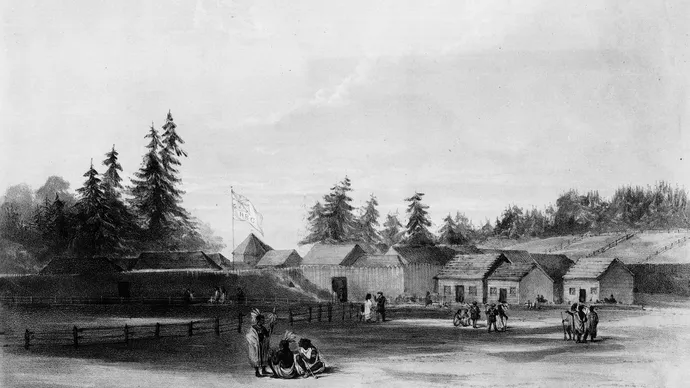
Whitman wanted to keep taking these missionary trips and continued educating anyone he met on the merits of Christianity. However, It seems that the American Missionary Board didn’t feel the same way and closed the Whitman mission.
Nevertheless, Whitman was determined to continue his work, so he returned to convince them to reopen his mission. Meanwhile, another missionary, Elijah White, led a larger group of approximately 100 settlers across the Oregon Trail.
The Great Emigration
Somehow, Whitman convinced the missionary board to allow him to continue his work. Marcus Whitman and Narcissa Whitman finally returned to their mission in Oregon in 1847. They brought at least 120 wagons, supplies, and over 1,000 settlers.
This group of immigrants would be known as the Great Emigration. This migration would spur a massive movement of settlers into the West; finally, Manifest Destiny was genuinely taking hold.
The Great Emigration was one of the largest groups of immigrants to travel on the Oregon Trail. However, despite the positive outlook of the journey, it was about to become more challenging than ever.
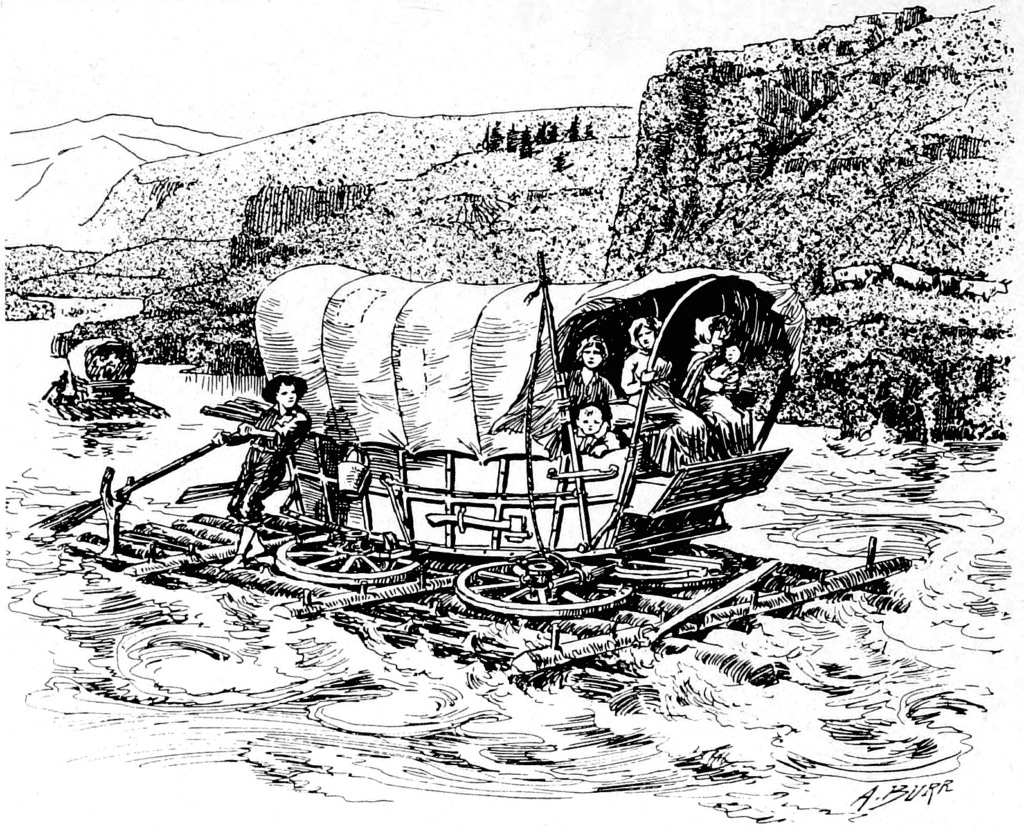
Marcus Whitman had hoped to establish more missions along the way but was met with resistance from the Cayuse Indians. So, when Whitman set out again, the focus shifted from trying to convert the Native Americans to helping the new White settlers that had made their way west.
Unfortunately, at the same time, more settlers chose to emigrate West, so much so that the Cayuse Indians suffered terribly from a measles outbreak. The outbreak destroyed the Cayuse Indian population, despite Whitmans’ attempts to help them with his medical knowledge.
In a horrible turn of events, war broke out. Marcus Whitman and his wife were among those killed by the Cayuse Indians in 1847, which caused great unrest among the settlers. It was one of the first significant conflicts between White settlers and Native Americans. The Cayuse Indians began killing and taking more missionary staff until the government intervened.
The Cayuse War
Angry and betrayed, the Cayuse Indians and the federal government clashed over their differences for approximately seven years. The Cayuse War resulted in the virtual destruction of the Cayuse Indian tribe. The Cayuse were not the only ones to suffer; however, many settlers died.
The Cayuse War would not be the last of the conflicts between White settlers and Native Americans despite the death and destruction.
General Life on the Oregon Trail
Now that you understand how the Oregon Trained developed and some of the significant events along its route, you might wonder what day-to-day life was like for those who traveled it.
For the most part, life on the Oregon Trail was pretty mundane, but it required careful planning and hard work. First, those who wanted to travel on the Oregon Trail had to gather supplies. This was no small feat and usually needed months of preparation. Typically, settlers would stock up for five or six months but be ready for a year-long trip.
After travelers gathered their supplies, wagons had to be packed and loaded with care; if something was too heavy, it could cause the wagon to tip. It might fall out and be lost if they packed something too loosely.
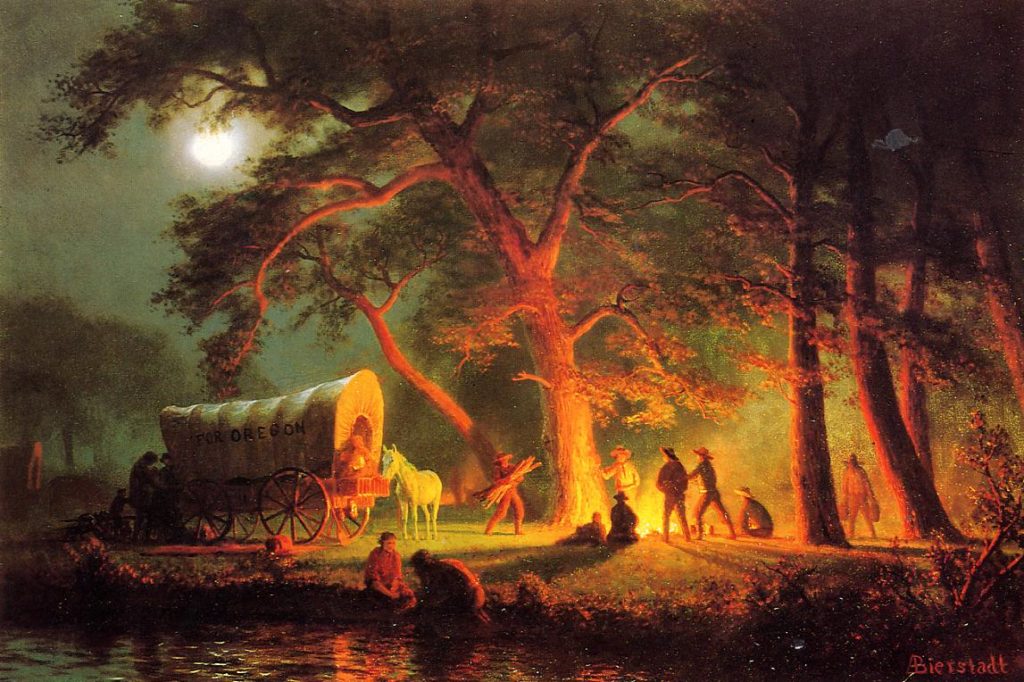
Every item on the Oregon Trail had to serve a purpose; there was no room for luxury items. Settlers sold the things they couldn’t take. Business owners had to sell their livelihoods to make the trek across the Western trail.
Settlers took a list of everyday items with them to ensure that they survived the trip, like:
- bacon
- coffee
- sugar
- salt
- flour
- guns and ammunition
The all-important covered wagon was an essential item that settlers needed to have with them. These wagons were the lifeblood of Oregon Trail travelers and could not be replaced if lost or stolen. Not only did they carry all of the supplies a family needed, but they also served as a shelter at night.
These wagons were priceless and often carried other supplies like barrels of water, tar, and extra wheels and axles for the eventuality that something went wrong.
The Dangers of the Oregon Trail
While the Oregon Trail was a great adventure for many, it was also a dangerous place. Settlers had to be on the lookout for many things if they wanted their families to survive the journey.
In addition to the challenges of packing and loading a wagon, settlers had to deal with the elements. While there were many paths that immigrants could take on the Oregon Trail, many stuck to the well-worn path through the Great Plains.
Traveling at a Steady Pace Was a Must
A steady pace was essential if settlers wanted to make it to their destination before winter set in; if they didn’t, they risked being stranded in the middle of nowhere with no food or water.
This meant that migrants had to start their trip in April or May and keep their pace at ten to fifteen miles per day.
Although this might seem like a leisurely pace, it was grueling. Settlers had to look for things that could damage their wagon or injure their livestock if they brought any. But on the other hand, this pace also ensured that the grasses remained plentiful for their livestock to eat.
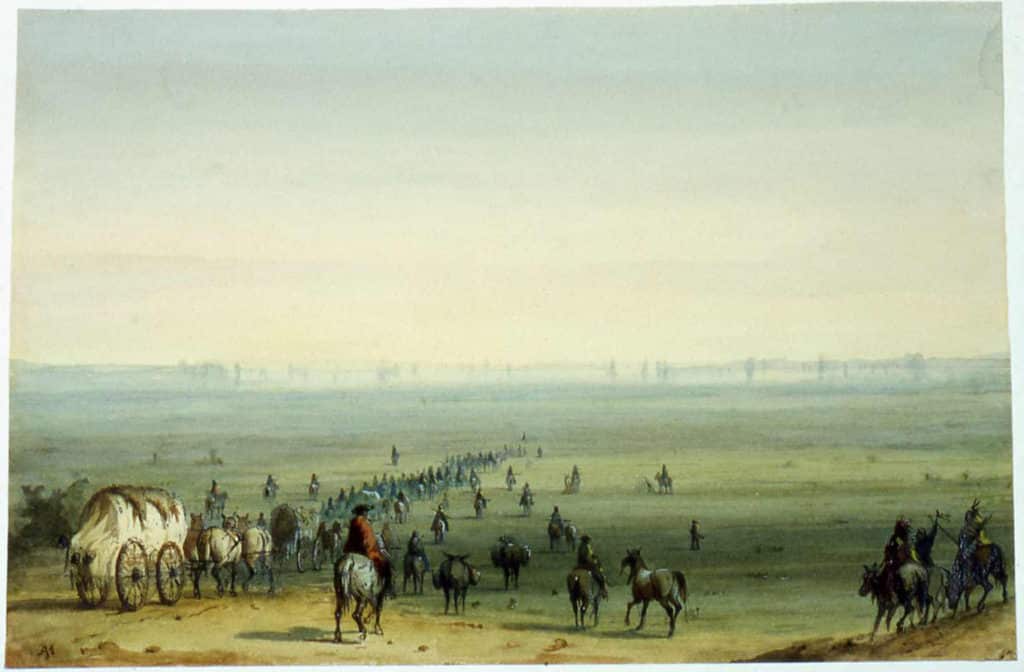
If they were diligent and disciplined, they reached Fort Kearney; through dedication and hard work, they could make the 600-mile trek beside the Platte River before reaching Fort Laramie.
However, the journey was far from over, so they had to continue up the Rocky Mountains. Weather events like storms made travel difficult and dangerous, but settlers had to push on if they wanted to reach their final destination.
Lives Were Lost
The Oregon Trail was dangerous, and many settlers lost their lives. Some succumbed to diseases or harsh conditions, but generally, about one and ten didn’t survive the trip there.
The disease was the most dangerous part of traveling the Oregon Trail. Cholera, dysentery, and influenza were all deadly diseases that could quickly end someone’s life if they contracted them.
Many settlers also faced serious injuries. Broken bones, snake bites, and gunshot wounds were all standard on the trail. In addition, people were run over by wagons, kicked by horses, and bitten by insects.
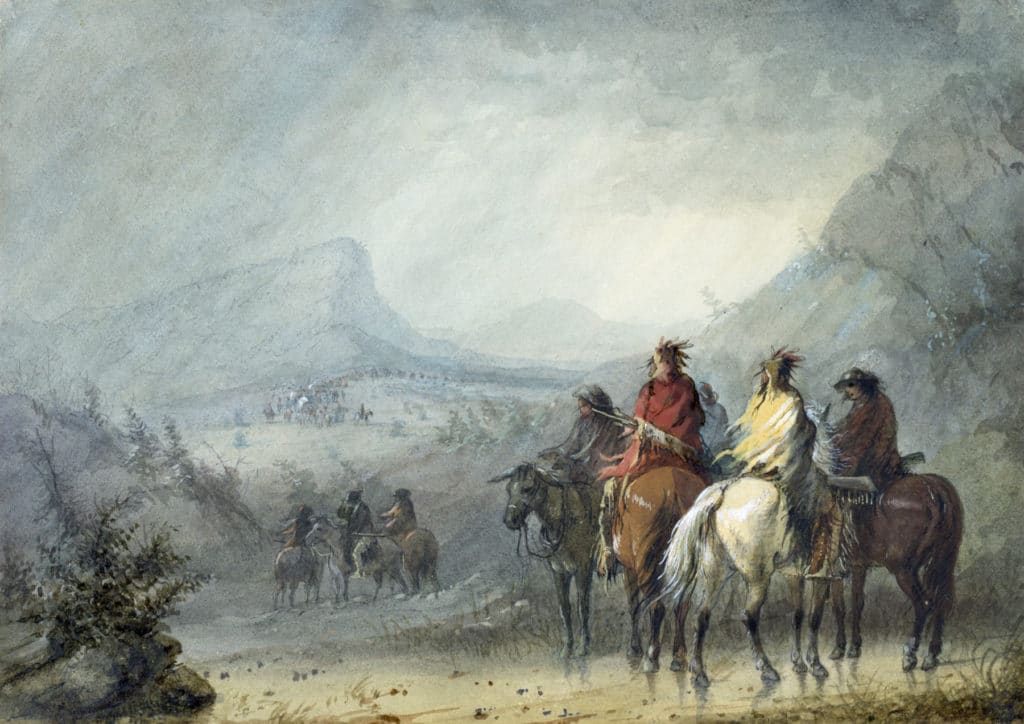
River crossings were a necessary part of traveling along the Oregon Trail, but often they could take the lives of settlers if they weren’t careful.
Drownings were common, as were hypothermia and exhaustion’ people could easily get lost in the wilderness and face starvation or dehydration.
Safe Havens Existed on the Trail
If settlers were injured or running low on supplies, they could go to Fort Laramie. It was a trading post; they could trade goods, restock supplies, and take a break. Safe havens allowed many people to complete the trip.
The Oregon Trail was a long and challenging journey, but it wasn’t always without its moments of beauty. One such moment was Independence Rock, a large granite outcropping that was a landmark for those on the trail. It was a sign that their work was paying off, and they had reached the halfway point.
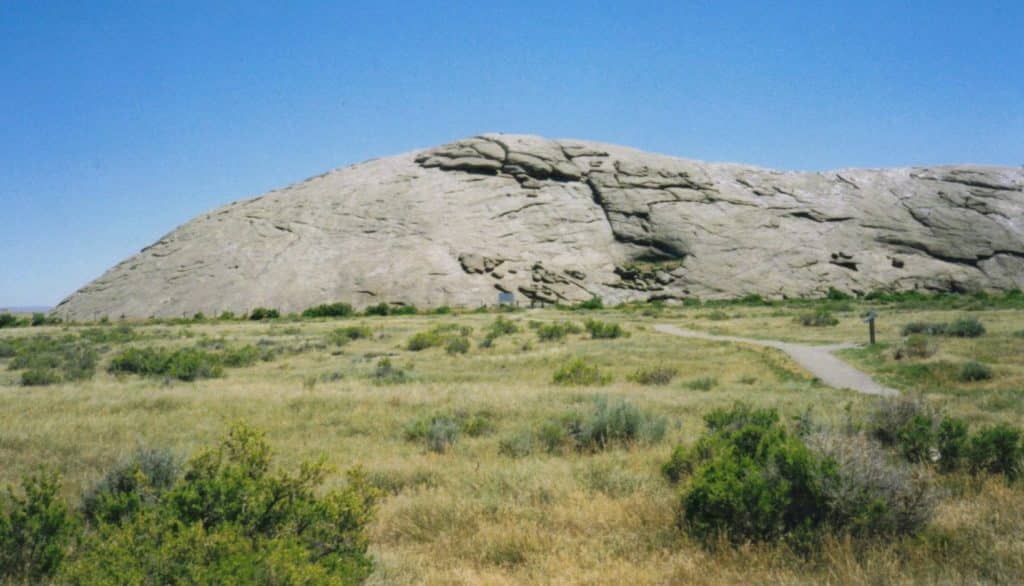
This was a momentous occasion for many, who often carved their names into the rock to commemorate their journey.
For some, this was a way to show future generations that they had made the trip. For others, it was simply a way to relieve the boredom of the journey.
First, settlers would journey up the Rocky Mountains and into the South Pass. Afterward, it was a trip across the desert to Fort Hall, another trading post where they could resupply before making the final push to Oregon City.
Not Everyone Was Qualified for Land Out West
Part of what fueled the mass emigration of settlers to Oregon was the promise of free land. The government was giving away acres of land to anyone who wanted it if they could meet the requirements specified by the government.
However, not everyone qualified for this land. The act stipulated those settlers must be at least 18 years old. They also had to be a citizen of the United States, which many recent immigrants were not.
Additionally, they couldn’t be a woman, so if a wife lost her husband during the trip, she would be ineligible for land. Unfortunately, black exclusion laws denied African Americans the right to settle in Oregon.
The Oregon Trail Was Dangerous
The Oregon Trail was a long and arduous journey, but it symbolized hope for many settlers. The trial represented a new beginning. It was a chance to start over and create a better life for themselves and their families.
It was a journey that was filled with danger but also beauty.
The trail is a reminder of the strength and determination of those who made the trip. It is a part of American history that we should never forget.

